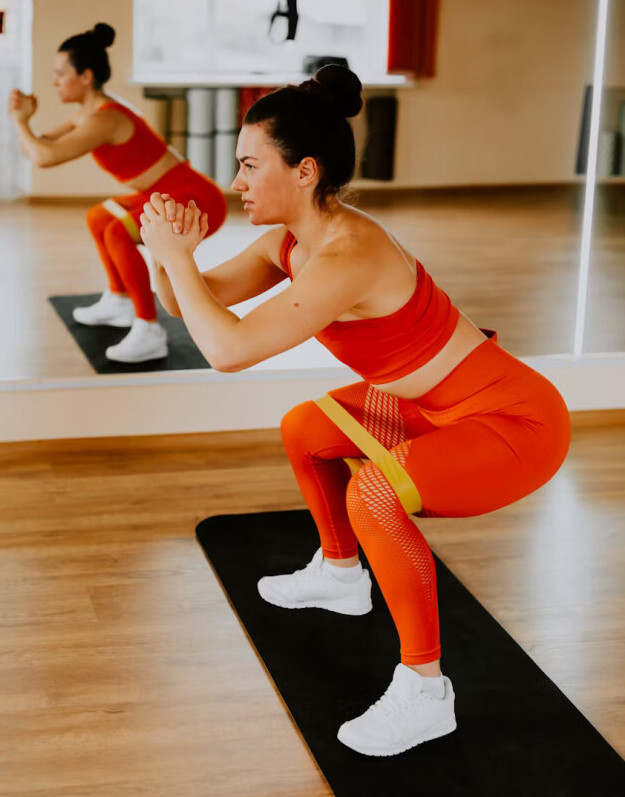Resistance bands are one of those tools I keep reaching for, whether I’m looking for a quick home workout or a way to warm up before lifting heavier weights at the gym. There are tons of choices out there, and figuring out which ones are actually worth your cash can take a bit of work. I’ve put together this guide to the top five resistance bands I’ve personally tried or researched, aiming to save you hours of scrolling and sorting.

Why Resistance Bands Are Worth Adding to Your Fitness Routine
Resistance bands haven’t just become popular by accident. They’re super flexible (pun intended), lightweight, and don’t take up much space, so you can use them anywhere: from your living room to a hotel room or even outdoors. Bands can help strengthen just about every muscle group, and they’re a good match for beginners, regular gym goers, and even folks rehabbing an injury. According to the American Council on Exercise, bands provide levels of resistance effective for building muscle, improving mobility, and increasing flexibility.
They first showed up in physical therapy. Fitness trainers quickly adopted them for general workouts. Compared with heavy dumbbells or bulky machines, bands turn basic moves like squats, rows, or presses into something a lot more challenging. With more people working out from home, resistance bands have popped up in routines for strength, pilates, HIIT, and even yoga as a way to add challenge without needing a gym membership. If you’re feeling stuck in your regular workout, switching things up with bands can give your routine a fresh boost.
Understanding the Types of Resistance Bands
It’s easy to think all bands are pretty much the same, but the differences can really matter depending on your goals. Here’s a quick breakdown to help you pick the style that fits:
- Loop bands: Flat, closed circles, usually used around the legs and thighs for glute work and squats.
- Tube bands with handles: Hollow, heavy duty tubes, often with handles attached on either end. Super useful for upper body exercises like shoulder presses and bicep curls.
- Figure 8 bands: These are short, shaped like an 8, and useful for arm or chest workouts. They’re easy to loop around feet or grip in your palms.
- Therapy bands: Long, flat bands (no handles), often favoured for gentle rehab or Pilates, but you can layer them for extra challenge.
- Fabric bands: Thicker and usually made from polyester blend; they resist rolling up and offer heavier tension, perfect for glute and hip workouts.
Each type offers different resistance levels, so testing a few can help find what works best for your body and exercise style. If you’re into Pilates or flexibility work, you might want to try therapy bands for their length and adjustability. For anyone after a more traditional strength-building feel, tube bands with handles make an excellent addition.
The Top 5 Resistance Bands: Tried, Tested, and Reviewed
Sorting through reviews, user feedback, and my own workouts, these are the five sets that rise above the rest. Here’s why each one is worth a look, plus the stuff I liked and what could be better.
1. Fit Simplify Resistance Loop Exercise Bands
This five band set is the one I always recommend to friends just starting out. The bands are super lightweight and color coded by resistance, from extra light (for gentle workouts or recovery) to extra heavy (for squats and deadlifts). They come in a simple drawstring bag that fits in your backpack or drawer.
What’s cool: Latex quality is solid, no snapping so far. The gradation from easy to hard means you can keep pushing yourself as you get stronger. They don’t roll up easily around your legs, which is a huge plus.
What’s not: If you’re allergic to latex, you’ll want to skip these. The resistance is good for general use, but if you’re really strong or already advanced, you might outgrow the tension on these after a while.
2. Whatafit Resistance Bands Set (Tube Bands with Handles)
This set stands out because it’s so versatile. You get five colour coded tube bands, ranging from 10 to 50 pounds of resistance, and you can stack them together for up to 150 pounds. Handles, door anchors, and ankle straps are included, which lets you copy a lot of cable machine exercises at home.
What’s cool: The handles are padded, so no pinching or slipping. It’s easy to attach bands to doors or furniture for rows, flys, and all sorts of chest/back exercises. I found these especially handy for shoulder work when rehabbing a tweak.
What’s not: It takes a minute or two to get used to setting up, especially if you’re doing circuit training and want to switch quickly. The clips that connect the bands could be stronger, so if you’re rough on gear, keep that in mind.
3. TeRich Fabric Resistance Bands
If you’re tired of thin latex bands rolling or snapping, fabric bands are a solid upgrade. This set comes with three strengths: light, medium, and heavy. The woven design is a game changer for glute bridges, hip thrusts, or monster walks; they barely move or roll, even on bare skin.
What’s cool: Super comfy and won’t roll up. They’re also machine washable, making them easy to clean after sweaty sessions. I found the heavy band perfect for squats and deadlifts. Suitable for all fitness levels, especially lower body work.
What’s not: Not ideal for upper body stuff because they aren’t as flexible/stretchy as latex bands. If you have a really wide range of motion, you might find the heavy band too tight for some moves.
4. TheraBand Professional Latex Resistance Bands
This set is really common in physical therapy, but don’t let that fool you; they’re useful for anyone wanting to stretch, warm up, or do lighter strength work. They come in rolls so you can cut to your preferred length. Each color stands for a different resistance (yellow: thin, green: medium, blue: heavy, black: very heavy). No handles or frills here, just long, flat bands.
What’s cool: Customizable length is handy for different exercises. Great for stretching, mobility warmups, and adding lowimpact resistance. Super portable and packs flat into a bag or suitcase.
What’s not: Without handles, grip gets a bit slippery if you’re sweating a lot. They’re best for slow, controlled moves, so trying to use them for explosive or high resistance exercises isn’t practical.
5. SPRI Xertube Resistance Bands
These tube bands come in resistance levels ranging from very light to ultra heavy. Each has comfy handles and a protective tube cover. They work great for classic gym moves like rows, presses, and overhead triceps extensions. I like these for maintaining strength on the road or doing quick living room circuits.
What’s cool: The protective covering helps these last longer, even with regular use. Handles are comfy, and you can buy single bands if you only need a specific resistance.
What’s not: Only one band comes per purchase, so getting a full range costs more than a set. And like all tube bands, heavy use can wear down the door anchor or tube if you aren’t paying attention.

What to Consider Before Buying Resistance Bands
Picking the right bands means thinking about how you plan to use them, where you’ll store them, and whether you have any allergies (latex is in a lot of bands). Here are some quick pointers I found helpful:
- Resistance range: Is the set strong enough for your fitness level, or will you need to buy upgrades soon?
- Durability: Look for reinforced stitching or protected tubes if you’ll use them a lot.
- Grip comfort: Handles and fabric bands matter for longer sessions; sweaty hands can make latex slippery.
- Storage: Bands take up little space, but a bag or box keeps everything organized.
- Extras: Door anchors, handles, ankle straps, and even workout guides are pretty handy for mixing up your routine.
Tips for Training Safely and Effectively with Resistance Bands
Bands make almost any move tougher, but a bit of prep helps you avoid injury or sore joints. A few things I’ve picked up along the way:
- Check bands before every use: Small tears can turn into snapped bands fast. Toss anything that’s looking rough.
- Use slow, controlled moves: Rely on your muscles, not momentum. This also lowers the chance of the band slipping.
- Anchor bands with care: If you’re using a door, always double check it’s shut tight before a set. Nobody likes getting smacked by a flying handle.
- Warm up and cool down: Just like with any workout, get your muscles moving and stretched before using full resistance.
- Listen to your body: Bands hurt? Swap to a lighter resistance or check your form before pushing through.
Common Questions about Resistance Bands
Q: Can resistance bands actually replace free weights?
A: For most people, bands are ideal for general strength and toning. If you’re looking to gain serious muscle, bands can get you far, but eventually, you may still want to mix in heavier weights.
Q: How do I choose between latex and fabric bands?
A: If you’re sensitive to latex, or you want extra comfort and zero rolling, fabric’s the way to go. Latex bands offer a bigger range of resistance and tend to be cheaper; great for upper body work or anyone starting out.
Q: What’s the best way to clean resistance bands?
A: Hand wash with mild soap and water, then air dry. Fabric bands can usually go in the washing machine (just air dry after). Keep latex bands out of direct sunlight to keep them from cracking.
Getting More Out of Your Resistance Bands
Using bands isn’t just about replacing dumbbells. Try mixing up your moves by using bands for stability work, as a warmup, or even for mobility stretches. If you’re after inspiration, there are tons of great apps and YouTube channels with bandonly workouts you can follow anywhere. Make sure to up the resistance or add more sets as you get stronger so you keep seeing progress. It’s a simple piece of equipment, but it can definitely carry you through everything from travel workouts to sweaty HIIT circuits at home. If you ever find bands getting easy, add a pause at the end of each rep to burn out even more, or combine different types of bands for layered resistance. Over time, resistance bands can become a powerful staple in any fitness plan, and exploring the various ways to use them can help you avoid workout boredom and get new results.
Thanks for checking this post out feel free to to leave a comment, ask questions and be sure to look on the other posts for everything fitness.
